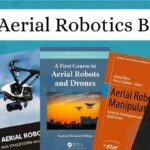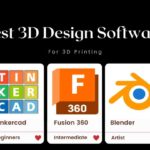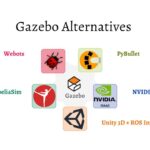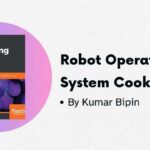Are you curious about how robots think and move? If so, Robot Operating System Cookbook by Kumar Bipin is a great book to start. It is a hands-on guide to understand the software that powers today’s most advanced robots.
ROS is an open-source framework that simplifies the development of complex robotic systems. This book takes you from the basics to advanced concepts of ROS. Whether you’re a beginner or an engineer looking to expand your knowledge, this book offers you both foundational concepts and advanced techniques. It bridges the gap between theory and real-world application, guiding you through everything from mobile robots to robotic arms and beyond.
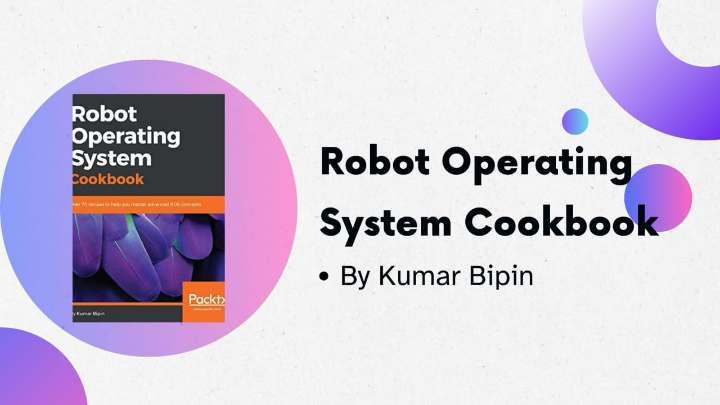
Table of Contents
Bibliographic Information of Robot Operating System Cookbook PDF
| Title | Robot Operating System Cookbook |
| Author | Kumar Bipin |
| Publisher | Packt Publishing (29 June 2018) |
| Language | English |
| ISBN-10 | 1783987448 |
| ISBN-13 | 978-1783987443 |
| Paperback | 484 pages |
About the Author – Kumar Bipin
Kumar Bipin has over 15 years of experience in research and development. He has worked with renowned tech companies such as Motorola and STMicroelectronics. Kumar earned his MS in Robotics and Computer Vision from IIIT Hyderabad and contributed to significant research at SERC, IISc Bengaluru. Currently, he leads Autonomai, an autonomous vehicle product at Tata Elxsi.
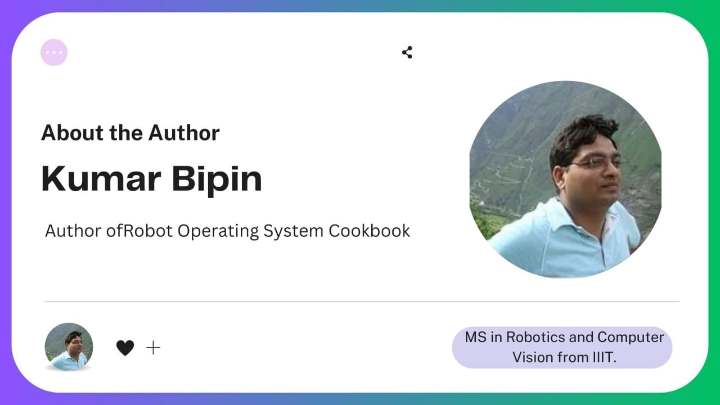
Chapters of Robot Operating System Cookbook
There are 10 chapters in this book. In every chapter you will learn something new.
- Getting Started with ROS
- ROS Architecture and Concepts I
- ROS Architecture and Concepts II
- ROS Visualization and Debugging Tools
- Accessing Sensors and Actuators through ROS
- ROS Modeling and Simulation
- Mobile Robot in ROS
- The Robotic Arm in ROS
- Micro Aerial Vehicles in ROS
- ROS-Industrial
Now we are going to discuss about these chapters in the section.
Robot Operating System Cookbook Read Online [Summary]
Getting Started with ROS
In the first chapter, Bipin guides you through the process of installing ROS on various platforms. Whether you’re using a desktop, virtual machine, or Linux containers, this book will help you install ROS on any system.
ROS Architecture and Concepts I
In this chapter, the author discusses about the core architecture of ROS. You’ll learn about ROS nodes and messages—the foundation of robotic communication. Nodes function like a robot’s neurons, sending messages to one another to accomplish tasks. By the end, you’ll understand how to make your robot think and respond like a well-oiled machine.
ROS Architecture and Concepts II
In this chapter, you’ll discover powerful tools such as the parameter server, actionlib, and pluginlib. The chapter also delves into nodelets, which enhance efficiency by reducing communication overhead between nodes, as well as the Transform Frame (TF), which enables robots to understand their spatial positioning. Mastering these tools will unlock the full potential of ROS, elevating your robotic projects to the next level.
ROS Visualization and Debugging Tools
In the this chapter, you will be introduced to some essential ROS tools such as gdb and valgrind. These are crucial for debugging code. You’ll also get to know rviz and rqt—these are the eyes and control panels for your robot. It helps you to visualize robot’s real-time ‘thoughts.’ Plus, you’ll explore rosbag, a tool for recording and replaying sensor data to analyze past events. These tools are indispensable for working with complex robotic systems.
Accessing Sensors and Actuators through ROS
This chapter tells you how to connect sensors and actuators to your robot through ROS. Sensors are like robot’s eyes and ears, and actuators as its muscles. This chapter shows you how to interface with hardware components using boards like Arduino and Raspberry Pi. By the end, you’ll have your robot interacting with the world around it.
ROS Modeling and Simulation
By reading this chapter, you will learn how to model and simulate using the Gazebo platform. It focuses on modeling physical robots and simulating virtual environments. You’ll learn how to model both mobile robots and robotic arms, designing their movements and interactions within virtual environments. By the end, you’ll be able to design, test, and optimize your robots in a virtual space.
Mobile Robot in ROS
In this chapter, you’ll explore one of ROS’s most exciting features—the Navigation Stack. This powerful tool enables mobile robots to move autonomously, like a self-driving car that navigates through streets without human input. The chapter walks you through how to use the stack to plan paths and avoid obstacles. It also introduces Adaptive Monte Carlo Localization, a technique that allows your robot to understand where it is in the world.
The Robotic Arm in ROS
This chapter focuses on robotic arms, a fascinating area of robotics. Here, you’ll learn how to create and configure a MoveIt! package. The chapter explains how to set up this powerful tool for motion planning and manipulation tasks. You’ll learn to program your robotic arm to perform complex actions, like picking up objects or assembling parts
Micro Aerial Vehicles in ROS
In this chapter, you’ll will know about Micro Aerial Vehicles (MAVs) using ROS. With RotorS, you can explore MAV research and development in a virtual environment. The chapter also covers autonomous navigation, integrating ORB SLAM and PTAM technologies. This combination allows MAVs to navigate and map their surroundings with precision. Imagine RotorS as a digital playground where you can test and perfect your MAV’s skills.
ROS-Industrial
ROS-Industrial, or ROS-I, is a robust toolset for industrial robots. The chapter covers essential tools like MoveIt!, Gazebo, and RViz, each offering unique capabilities for planning, simulation, and visualization. This chapter not only covers how to use these tools but also discusses future advancements in hardware support and capabilities.
Final Thoughts
In conclusion, “Robot Operating System Cookbook” by Kumar Bipin is an invaluable resource for engineers and robotics enthusiasts. It covers a wide range of topics, from basic ROS concepts to advanced applications like MAVs and industrial robots. Key points include its clear explanations, practical examples, and insights into future developments. If you have a basic understanding of GNU/Linux, C++, and Python, this book will be a great asset.
Buy on Amazon

